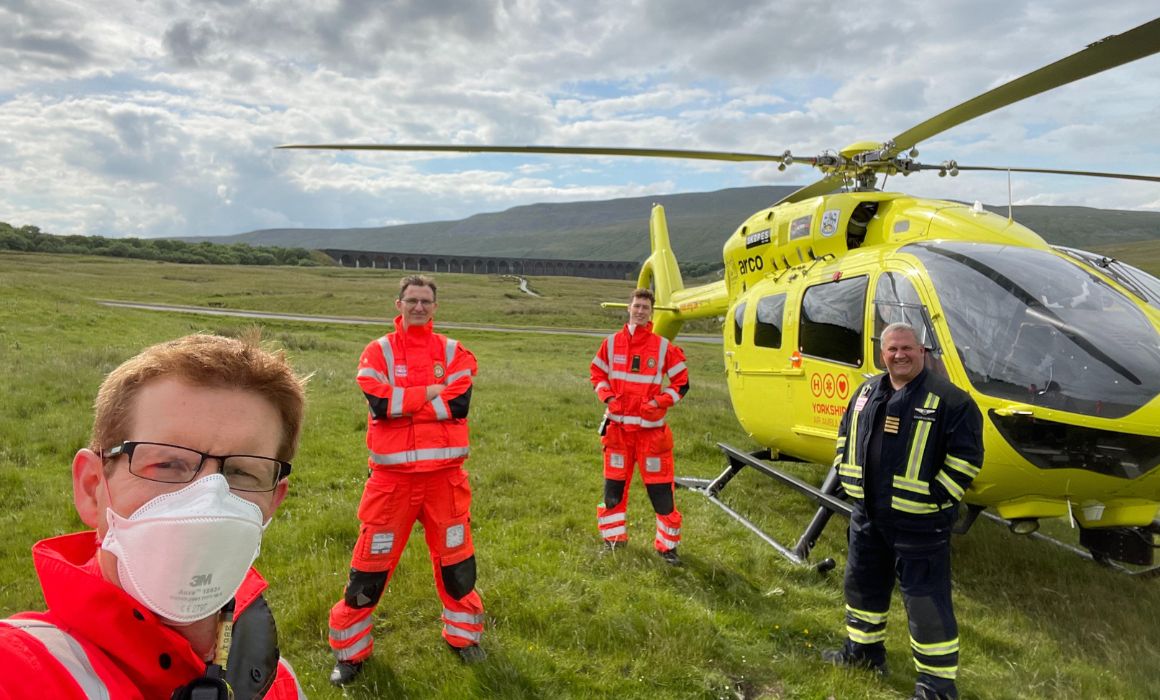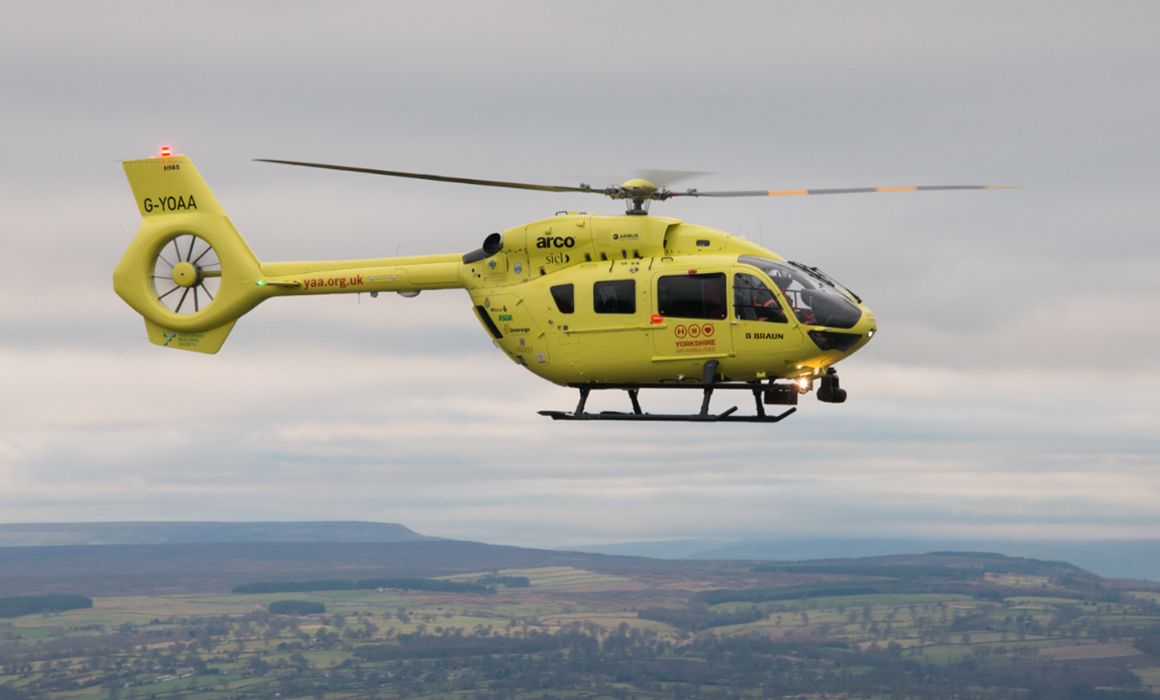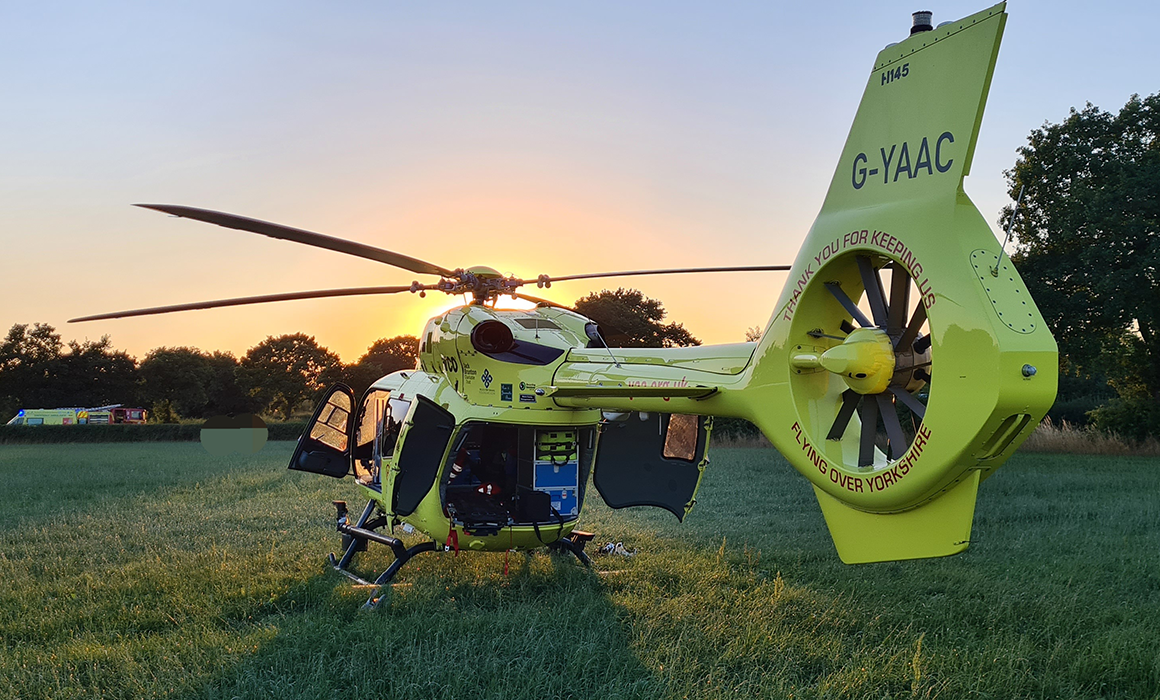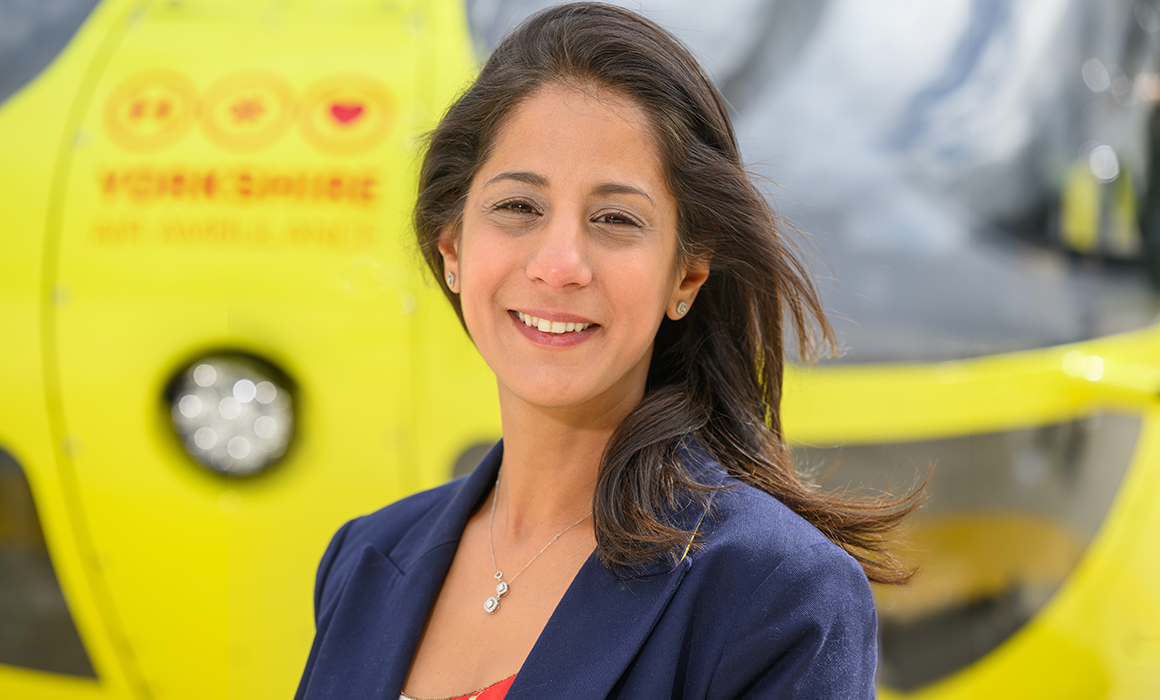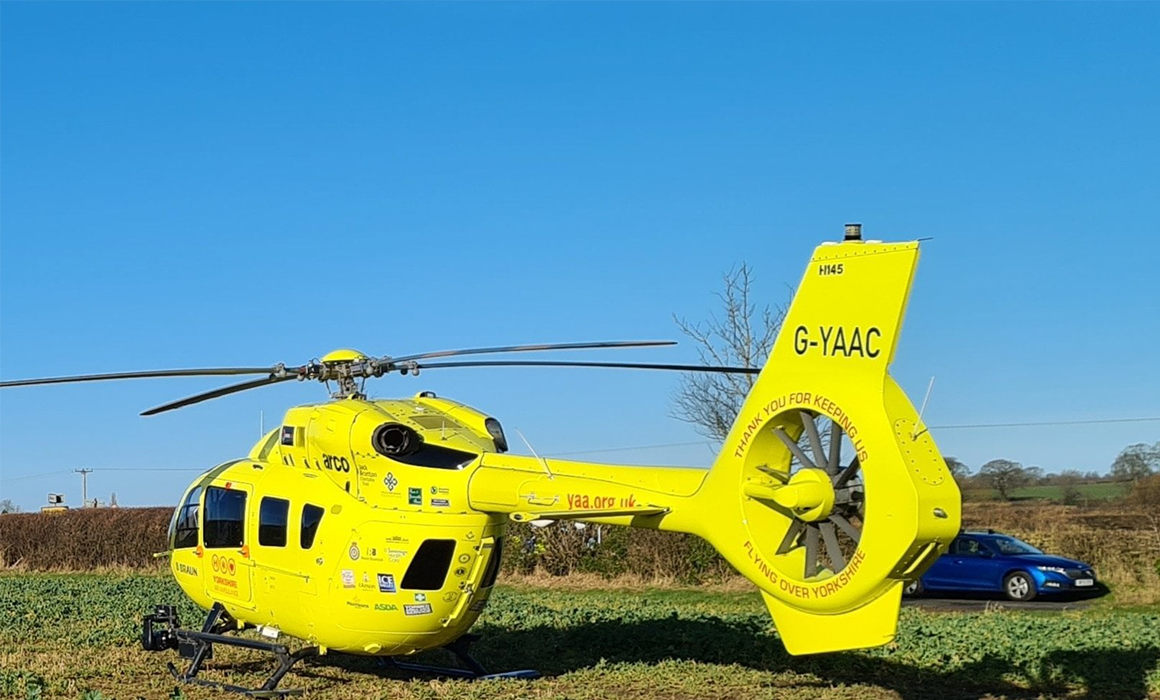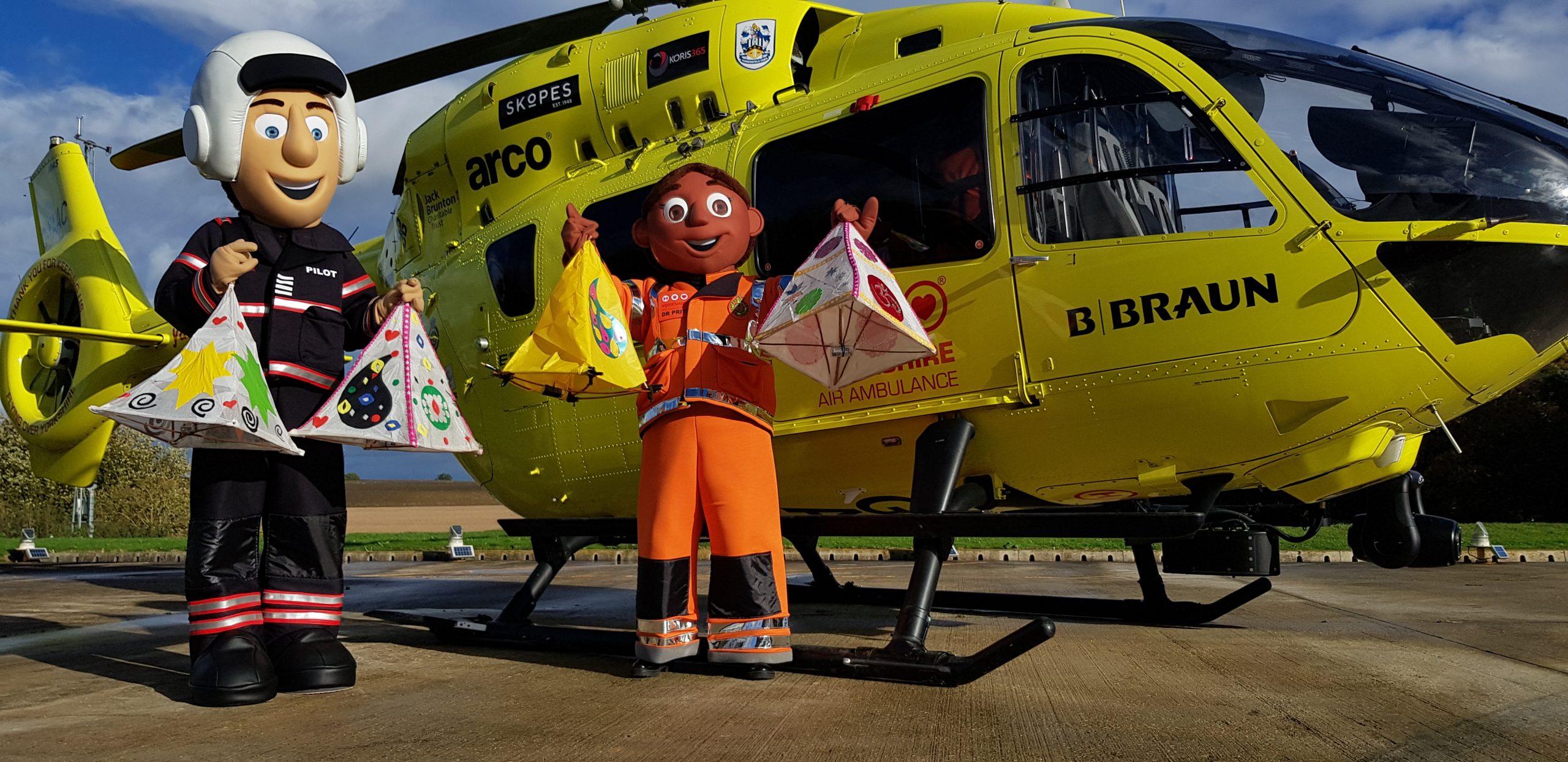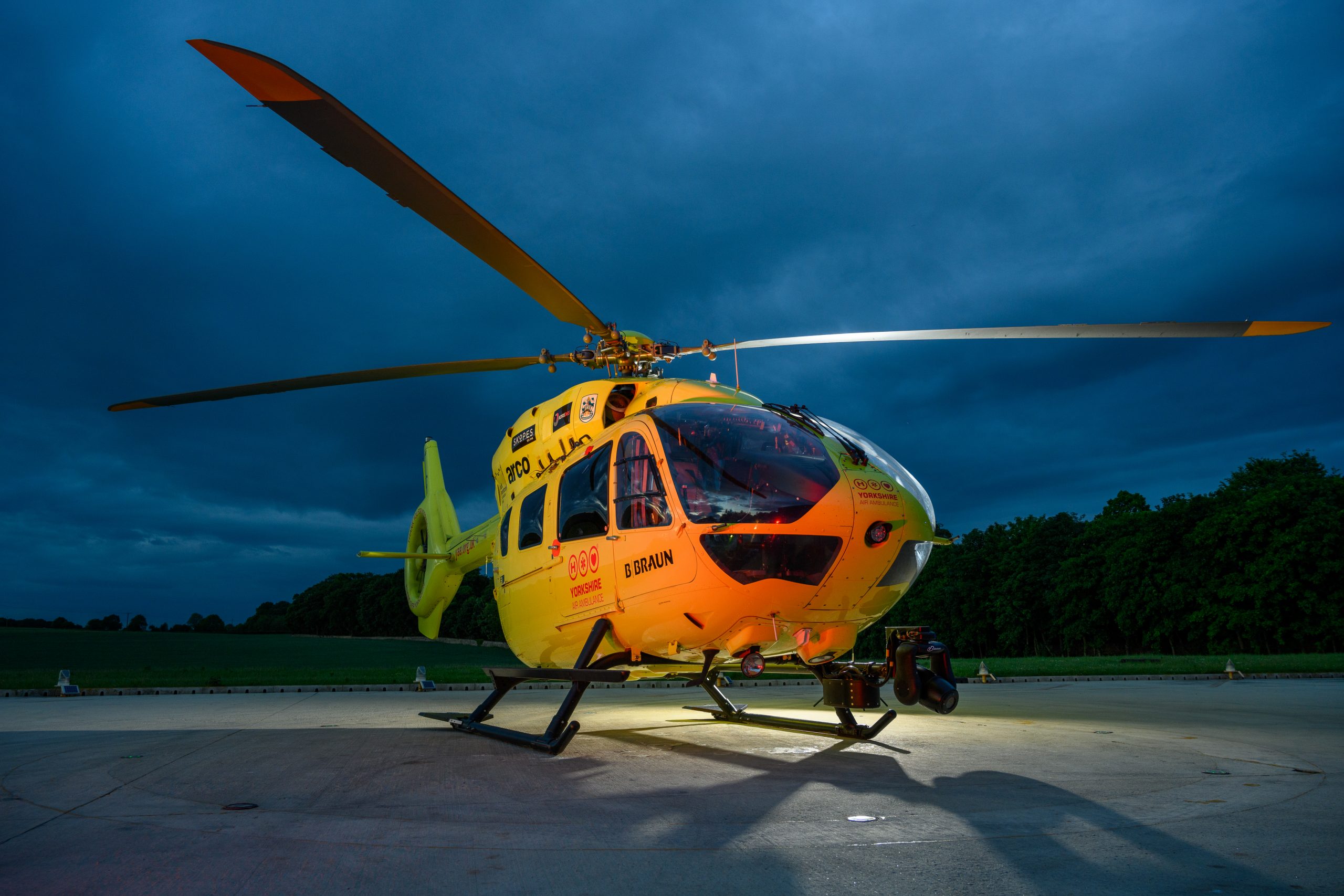Accidents and emergencies can happen anywhere, at any time. For those of us who live and work in rural areas of Yorkshire, access to emergency medical care can be especially challenging. That’s where Yorkshire Air Ambulance and their life-saving services come in, providing rapid response and essential on-scene care to people in even the most remote locations.
As an independent charity, Yorkshire Air Ambulance relies on volunteers and their fundraising efforts to continue saving lives across the region. It currently costs £19,000 per day to maintain and operate the YAA’s two Airbus H145 Helicopters, based at Nostell Priory in Wakefield and RAF Topcliffe near Thirsk.
In honour of micro-volunteering Day, we’re celebrating the power of small actions and how they work to support Yorkshire Air Ambulance. Whether it’s checking on collection tins or running a second-hand book stall, every little counts. Starting with the inspiring story of a local fundraiser in Goathland who is making a huge difference for the Yorkshire Air Ambulance.
Catherine Jenkinson spends much of her free time fundraising with her much loved second-hand book stall. Catherine’s book stall has received much praise from the East Yorkshire walking community as her stall, which is situated outside of her cottage, is on a main walking route in the village – on the rail trail between Grosmont and Goathland.

Passers-by can choose from a range of books, from fiction and romance to hard-hitting crime thrillers and everything in between. In addition, Catherine occasionally has Jigsaws and DVDs on offer too.
Catherine started her fundraising in 2019 and in just a few short years, has raised over five thousand pounds for YAA, which will contribute towards the charity’s ambitious daily fundraising target.
Speaking of her fundraising achievements, Catherine said, ‘My main motivation for supporting the Yorkshire Air Ambulance is because they don’t discriminate. They will fly out to anyone and everyone and I am happy knowing that my money isn’t just going toward a certain group or niche. You never know when you will need the Air Ambulance, especially in our cold, snowy winters, and this way I feel as if I am supporting my entire community without leaving anybody out.
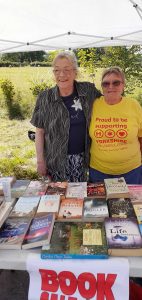
Although it started as something that I wanted to do, it truly has grown into a community thing, and now I feel as if I couldn’t do it without local people supporting me by donating their books to my stall’.
Yorkshire Air Ambulance Community Fundraiser, Keiron Hardwick, who works closely with Catherine, said, ‘We are tremendously grateful for the unwavering dedication and commitment shown by Catherine. The funds raised through her bookstall initiative all greatly contribute to keeping our helicopters in the sky and saving lives.
Catherine is known for her kind and charitable personality and has spent much of her free time raising money for a whole host of charities and businesses and we are so pleased to be one of them. Her hard work and selflessness truly inspires us all. Thank you to Catherine for being an incredible example of what it means to give back to your community’.
Volunteers are considered the beating heart of Yorkshire Air Ambulance, without whom, the charity would not be able to carry out its mission, to save as many lives across Yorkshire as possible. The contributions and presence of the selfless volunteers allow the charity to have such strong relationships within local communities, spreading positive word of mouth and raising awareness.
Throughout 2022, volunteers generously donated their time and energy to support the charity in a variety of ways. Attending more than 900 stalls, hosting more than 300 talks, and participating in over 125 bucket collections. Additionally, they selflessly emptied over 3,700 collecting tins. When adding up all their contributions, it equates to an impressive, estimated total of 10,000 volunteer hours.
Micro volunteering is convenient and accessible to everyone, regardless of busy schedules or other commitments, and usually doesn’t require any intensive training to take part. By participating in micro-volunteering activities, individuals can contribute to their communities and support causes they care about in a bitesize way, sometimes being just a ‘one off’ or alternatively, something people dedicate a short amount of time to on a more regular basis.
Social media support
Use your own social media platforms to help spread the word about a charity’s fundraising or awareness campaigns. By liking, commenting, or sharing posts across Facebook, LinkedIn, Twitter, and Instagram with your followers, you can help raise awareness about the work that the charity is doing and encourage others to get involved too.
Recycle your unwanted clothing
Another way to support Yorkshire Air Ambulance is by donating unwanted clothes and textiles as part of their successful recycling project. Drop-off banks are located across Yorkshire, find your nearest YAA recycling bank here. Once the donation bank is emptied and weighed, Yorkshire Air Ambulance receives a percentage of the profits from the recycled materials. This is a great way to clear out your wardrobe while also supporting a good cause.
Donation collections
One way to micro-volunteer is to sign up to collect donation tins and buckets from around the local area. The YAA’s friendly team of fundraisers can help to point you in the direction of local businesses that support the Yorkshire Air Ambulance and need their tins emptied.
Online reviews
Writing positive reviews of a charity on sites such as Google or Facebook can help to raise their profile and encourage others to support them. By taking just a few minutes to leave a review, you can help the charity to reach more people and make a bigger impact.
DIY projects
If you’re handy with a needle and thread, you could make items to donate, such as knitted blankets or crocheted hats. The Yorkshire Air Ambulance fundraising team always have space on their stalls or at their pop-up shops for items that have a special personal touch, with all the proceeds from each stall helping to keep the crew of doctors and paramedics flying high.
Tackle a sponsored challenge
If you lead an active lifestyle, why not take on a sponsored challenge? Many of Yorkshire Air Ambulances volunteers enjoy completing personal challenges, such as sponsored runs, hikes, and swims, to raise money. Some supporters even like to include their pets, taking part in sponsored dog walks. It only takes a few short minutes to create a Just Giving page for your friends and family to support you. Not only will you be doing something good for your health, but you’ll also be making a difference for a cause you care about.
Why not give it a try and see what kind of impact you can make? Yorkshire Air Ambulance is currently looking for individuals, couples, or small groups of friends to join their friendly team of volunteers across Yorkshire. Find out more about volunteering for Yorkshire Air Ambulance here.
This article was written in partnership with Countryside Jobs Service website, which provides valuable resources and opportunities for those interested in working in conservation, countryside management, and related fields. Find more information on Countryside Jobs Service by visiting their website here.


